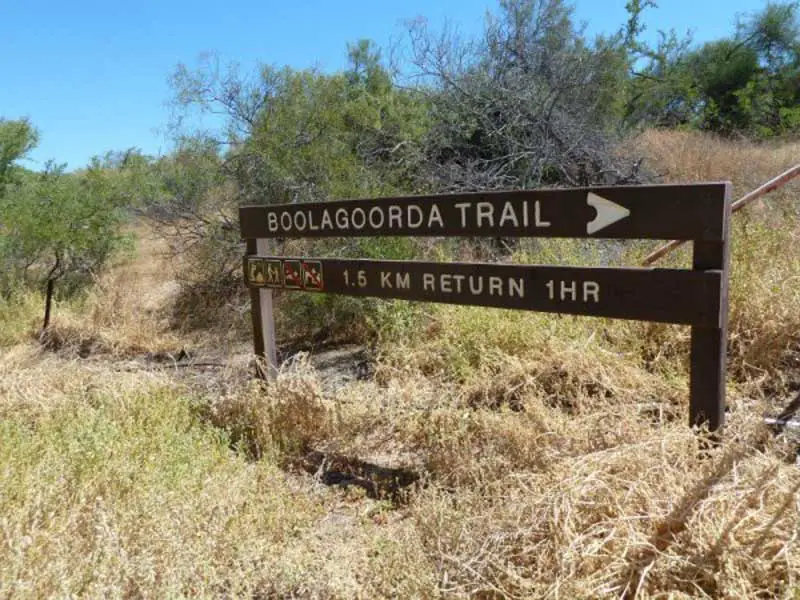Shark Bay is one of only two places in the world where living marine stromatolites exist. These living fossils contain microbes similar to those found in 3,500 billion year old rocks - the earliest record of life on earth. As such, the stromatolites provide a record of local environmental changes. Stroll along the boardwalk, read about the history of Stumpy's stromatolite family and take in the biology of these ancient organisms.

Hamelin Pool is home to the most diverse and abundant examples of living stromatolites in the world. These creatures are monuments to life on Earth over 3,500 billion years ago; a time when no other complex creatures were present on the planet.
You can visit these stromatolites easily at Hamelin Pool where a boardwalk provides easy access to their marine environment. Other visitor facilities nearby include the Old Hamelin Pool Telegraph Station, built in 1884 as part of the vital communication line between Perth and Roebourne. The original building is now a museum housing many fascinating artefacts.
Access
Getting to Hamelin Pool and the stromatolites is easy. Drive the 27km of sealed road from the North West Coastal Highway and turn right at the signs for the last 5km to the Old Telegraph Station. From there it's a short walk along a formed walking track to reach the boardwalk and view the stromatolites.

Boolagoorda Walking Track
This walking track is a 1.4km loop track linking the Old Telegraph Station with the stromatolite boardwalk. The walk’s key attraction is obviously the stromatolites but other interesting historic sites can be found along the way including the old shell block quarry, a grave and remains of the old telegraph line. Information signs explain the significance of these features.
Tearooms / Café
Privately run tearooms within the telegraph station precinct offer snacks, drinks and souvenirs. Staff also run tours of the small museum.
Caravan Park and Camping Area
It is possible to stay overnight at Hamelin Pool in the campground located at the Old Telegraph Station. Toilets, showers, water and kiosk facilities are available for people using the campground.

Viewing the Stromatolites
Stromatolites are the number one attraction at Hamelin Pool. These ancient structures are examples of what life on Earth was like 3.5 billion years ago and are considered living fossils. Cyanobacteria were some of the first living creatures on Earth and stromatolities are formed by these organisms. How? The cyanobacteria bond together and produce a sticky gel – trapping sediments and sand together and gradually building up layers. As the sediment accumulates, it forms flat algal mats or hardens to form stromatolites, which have an outer layer of living cyanobacteria. At first glance these don't even seem to be living. Each structure is actually a very slow growing microbial colony that may grow less than 1mm per year.
A 200m boardwalk gives access to the stromatolites’ environment and interpretive signage helps explain all there is to know about these intriguing organisms. A short walk leads from the Old Hamelin Pool Telegraph Station out to the start of the boardwalk. When visiting the stromatolites please do the right thing and stay on the boardwalk to protect these delicate structures.

The Old Telegraph Station
Long before the stromatolites were discovered, Hamelin Pool was an important transport and communication hub. In 1884 the Hamelin Pool Telegraph Station was built and became an important link in the telegraph line between Perth and Roebourne. Originally named the Flint Cliff Telegraph Station after a local landmark, the station played a vital role in Western Australia's communication system until the advent of the public 'telex' system spelt its demise in the late 1950's.
Also known as Flagpole Landing in the early 1900's, Hamelin Pool was an important transport terminus and was the landing point for cargo vessels bringing in supplies and taking out wool from surrounding stations. There were no roads in those days and wool was hauled by horse and cart out to small vessels close to shore for transport to Perth. Decades later the wheel tracks from these carts can still be seen today in the algal mats near the boardwalk!
The fascinating history of the telegraph station can be relived by taking a tour of the small museum with one of the local staff. Inside the museum are relics from the days when the station was fully operational, along with an informative stromatolite display. Along the Boolagoorda Walk you will also find interesting historic features relating to the telegraph station era such as remnants of the old telegraph line and an historic grave site.

Shell Block Quarry
Shark Bay is home to a unique animal – the Hamelin Cockle – a shell species so prolific in Hamelin Pool that the sheer volume of shells has been compacted into a solid mass able to be cut into blocks. A number of buildings in Shark Bay were built out of this material and the quarry site at Hamelin Pool where they were extracted can still be seen along the Boolagoorda Walk. When visiting the town of Denham look for the old Pearler Restaurant and St Andrew's Church made entirely of these shells. For the amazing story of the Hamelin Cockle read the www.sharkbay.org fact sheet.
Fees
There are no entrance fees for Hamelin Pool. Fees apply however if you wish to visit the museum or camp at the Hamelin Pool Telegraph Station. For more information contact the station staff via the details below.
Contacts
Hamelin Pool Telegraph Station
PMB 74, Via Geraldton WA 6530
Ph: 08 9942 5905
Fax: 08 9942 5989
Text: Shire of Shark Bay
Design by W3Layouts | Content © 2013 Phoenix Group Co. | Sales: phone 1300 753 517, email: [email protected]

